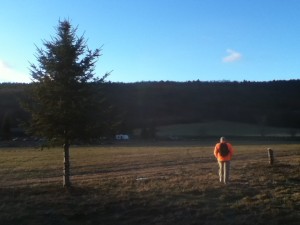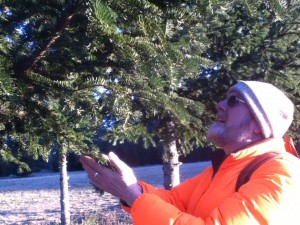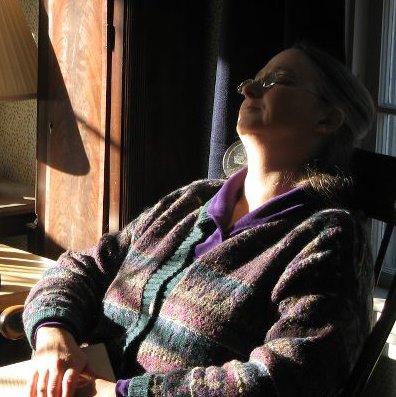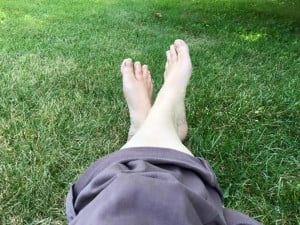There are two ways to experience this time of year: as movement, and as stillness.
The name this season’s holiday is given by Pagans reflects that duality. Call it solstice; call it Yule. One means the sun standing still… the other means wheel: the wheel of the sun, presumably, or the wheel of the year, turning and moving, changing all the time.
And though we crown our tree with a burnished copper sun, and leave candles burning throughout the longest night to encourage its return, I realize that, for me, the most important aspect of this holiday is its quiet.
My first Solstice as a Pagan, I was a new mother of an almost one-year-old girl. Her father and I set up a tree–we put it in the pantry, behind a baby gate, to keep our daughter from pulling down the shiny lights and baubles. I remember spending as much of the day as I could alone, outside as much as possible in the chilly Vermont wind. It was a gray day, I remember, and when I came inside and turned off all the lights, our apartment was wrapped in gloom.
When I went through the house at twilight, carrying a single candle through the rooms, I really felt the hush of the waiting dark. And when I reached the kitchen, and turned on the lights on the tree–my first-ever Yule tree, not a Christmas tree any longer–I felt a warmth and joy from the simple fact of light: lights burning in the night, keeping vigil until dawn.
Over the years, our celebrations have evolved–but they have retained as much acceptance of the cold and the dark as celebration of dawn and the sun. We love the strengthening light past the solstice… but we would not understand the beauty of it, if we did not pause for the beauty of the long nights and sleeping land.
The celebration of our Yule begins with the trip to find a tree.

We’re a cut-your-own kind of family. Some years, when we couldn’t find anything better, we’ve settled for very professional, high density tree farms to find our tree. Better have been the years when we have found a neglected tree farm, a side line of a farmer or someone who simply inherited the land. Not for us the trees pruned and pushed into bushy, Hershey’s kisses shapes! We’re looking for a balsam fir, tall enough, but not too tall, and with an awkward gap or two to remind us that it is real, an honest tree that grew the way the sun and wind and nature told it to.
I remember the years we’d get our trees from a man whose gnarled hands and bent back made him seem like a tree himself. He was like a wizard out of legend, in spite of his plaid wool coat, and buying a tree from his farm felt like buying a tree from Winter himself. But then he died, and the trees grew tall. (I think of him, sometimes, when we drive past the house where he used to live.)
Nowadays, we buy our tree from an abandoned tree farm, being brought back into production by a new generation of farmers. The overgrown trees from its former life stand twenty, even thirty feet high. And though they offer pre-cut trees from other farmers, the really rewarding thing to do is to head out across the field (off to the east of where the rows and rows of seedlings are emerging) to find one of the giants, trees that tower far above our heads.
We crane our necks. “That one?” we ask.

“No, no–look! That one has a double trunk, when you get up beyond that branch.”
“That’s true. Not that one. What about that one, over there?” and we point, and head across the field, trudging through snow or mud, across the emerging meadow to another possible tree.
When we find the tree we think will suit us, we stop to ask if we’ll suit it. This is sacrifice. This is serious: a life that has stood in it’s own place through thunderstorms and drought, through long nights of crickets and cicadas, or howling winter blizzards… that life is about to be cut down. We stand. We open wide the subtle senses. We ask.
Sometimes we do get no for an answer, and then we move on.
These trees, however. They have stood for longer than their kind are normally allotted. They have heard long years of wind and insect songs, and either because they feel the time is right, or because they know that they will be taken (by the farmer if not ourselves)… these trees rarely tell us no. They seem to understand acceptance.
Acceptance. Endings. Stillness.
The pause between the year’s outbreath, and breathing in again.
When we have found a tree that consents to come with us, we cut it down. We bring it home.
















